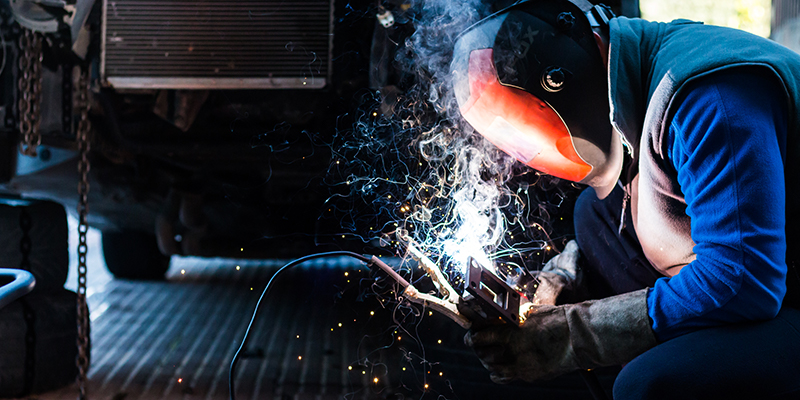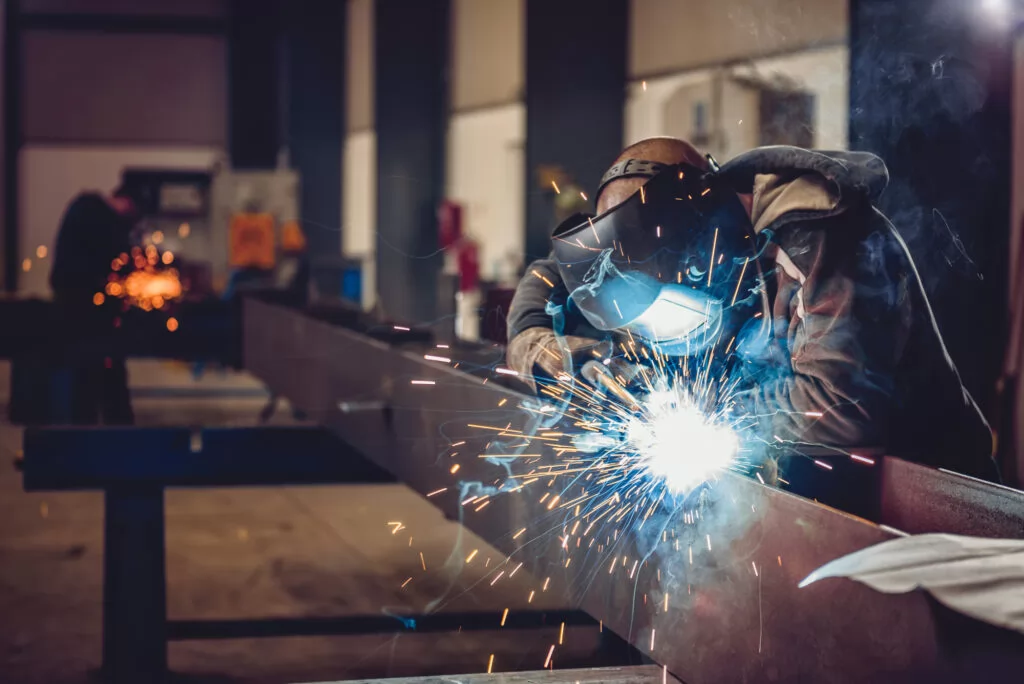Common Welding Repair Service Issues and How to Address Them Properly
Welding repair work typically run into a range of problems that can jeopardize the honesty of the end product. Typical issues consist of poor infiltration, porosity, and imbalance, to name a few. Each flaw offers one-of-a-kind difficulties that call for certain methods for resolution. Comprehending these issues is crucial for welders aiming to improve their results and skills. This discussion will explore these typical welding repair concerns and reliable approaches to resolve them.
Insufficient Penetration
Inadequate penetration happens when the weld metal fails to fully fuse with the base product, leading to weak joints and possible structural failings. This concern typically originates from inadequate warm input, incorrect electrode angle, or improper welding rate. Welders might encounter insufficient infiltration due to a mistake of the necessary parameters for a details material thickness or kind. Furthermore, contamination on the base material's surface can impede efficient bonding, intensifying the issue. To deal with insufficient infiltration, welders need to ensure appropriate setups on their equipment and keep a clean job surface area. Regular inspection of welds is advised to determine any type of deficiencies early, permitting prompt modifications and the prevention of jeopardized structural stability in bonded settings up.
Porosity
Porosity is a common defect in welded joints that manifests as little gas bubbles trapped within the weld metal. This issue can endanger the honesty of the weld, causing decreased toughness and prospective failing under anxiety. Belgrade Fabrication. Porosity usually arises from contamination, moisture, or incorrect welding methods, which allow gases to escape right into the liquified weld swimming pool. To address porosity, welders should ensure proper surface area preparation, keep a tidy functioning environment, and make use of appropriate welding specifications. Additionally, selecting the ideal filler product and shielding gas can mitigate gas entrapment. Normal assessment and testing of welds can help identify porosity early, ensuring prompt restorative activities are taken, consequently maintaining the high quality and integrity of the welded framework
Misalignment
Misalignment in welding can develop from various factors, consisting of improper configuration and thermal expansion. Understanding the source is necessary for effective resolution. Numerous adjustment methods are readily available to straighten parts and guarantee structural integrity.
Root causes of Misalignment
Welding misalignment typically originates from a range of underlying issues that can compromise architectural honesty. One primary reason is incorrect fit-up of elements before welding, which can bring about voids and unequal surfaces. Variants in thermal growth during the welding procedure can likewise result in distortion, especially if the materials being joined have various coefficients of growth. Additionally, inadequate clamping and fixturing may fail to hold parts securely in position, causing activity during welding. Improperly kept devices, including welding makers and devices, might introduce variances in the weld bead, additional contributing to misalignment. Driver error, stemming from not enough training or experience, can additionally play a considerable duty in developing misaligned welds.

Correction Strategies Available
Attending to misalignment successfully requires a combination of corrective strategies customized to the details problems at hand. One typical technique is the usage of jigs or components to hold components in the correct placement throughout welding, guaranteeing constant alignment. Additionally, preheating the products can help in reducing distortion and boost fit-up. For significant imbalance, mechanical adjustment strategies, such as using hydraulic jacks or clamps, can be employed to fix the placement prior to welding. Post-weld warmth treatment may likewise be essential to relieve stress and anxieties triggered by misalignment. Careful assessment and modification during the setup phase can protect against misalignment concerns from becoming considerable problems, promoting a smoother welding procedure and improving overall structural honesty.
Distortion
Distortion is an usual difficulty in welding that can develop from various elements, consisting of uneven cooling and heating. Recognizing the sources of distortion is vital for carrying out effective avoidance techniques. Resolving this problem not just improves architectural integrity but additionally boosts the total high quality of the weld.
Root causes of Distortion
When based on the intense warm of welding, materials commonly undertake adjustments that can bring about distortion. This phenomenon mostly arises from thermal development and tightening throughout the welding process. As the weld area warms up, the material increases; upon cooling, it gets, which can develop inner anxieties. On top of that, uneven heating across a workpiece can worsen these stress and anxieties, resulting in warping or bending. The sort of material additionally plays a significant function; steels with varying thermal conductivity and coefficients of development might react in different ways, causing unpredictable distortions. Bad joint layout and insufficient fixturing can contribute to imbalance during welding, raising the probability of distortion. Understanding these causes is necessary for reliable welding repair work and prevention strategies.
Prevention Techniques
Efficient avoidance strategies for distortion during welding focus on managing warm input and guaranteeing appropriate joint design. Preserving a consistent heat input aids to minimize thermal expansion and tightening, which can bring about distortion. Making use of strategies such as preheating the work surface can check over here also reduce the temperature slope, promoting uniform home heating. In addition, choosing proper joint styles, such as T-joints or lap joints, can enhance stability and decrease anxiety concentrations. Implementing correct fixturing to secure the workpieces in place better help in maintaining placement throughout the welding procedure. Ultimately, staggered welding sequences can distribute heat much more evenly, avoiding localized distortion. By using these approaches, welders can greatly lower the probability of distortion and boost the general quality of their welds.
Splitting
Splitting is a typical concern run into in welding repairs, commonly arising from different variables such as incorrect air conditioning prices, product option, or inadequate joint preparation. The event of cracks can considerably endanger the stability of the weld, bring about potential failures throughout procedure. To resolve this concern, welders must first analyze the origin, making certain that products work and appropriately picked for the particular application. In addition, regulating the air conditioning rate during the welding process is vital; fast cooling can induce tension and result in breaking. Proper joint design and preparation also contribute to lessening the danger. Carrying out these approaches can boost weld top quality and durability, inevitably lowering the probability of cracking in completed weldments.
Incomplete Combination
A significant issue in welding fixings is incomplete blend, which takes place when the weld steel does not adequately bond with the base material or previous weld passes - Montana Mobile Welding and Repair Welding. This defect can lead to weaknesses in the joint, potentially endangering the honesty of the welded structure. Aspects contributing to incomplete fusion include not enough warm input, inappropriate welding technique, and contamination of the surfaces being joined. To address this concern properly, welders ought to assure appropriate pre-weld cleaning and surface preparation, along with readjust their welding criteria to attain adequate infiltration and fusion. Normal read what he said assessment throughout the welding procedure can also help recognize insufficient combination early, permitting prompt restorative steps to boost the total high quality of the weld
Overheating
While welding repair services can enhance structural stability, overheating provides a significant difficulty that can bring about material degradation. Too much warmth during welding can modify the mechanical buildings of steels, leading to reduced stamina, increased brittleness, and warping. This phenomenon is particularly essential in high-stress applications where structural reliability is vital. Identifying getting too hot can involve aesthetic evaluations for staining or distortion, in addition to keeping an eye on temperature throughout the welding process. To reduce the risks linked with getting too hot, welders must utilize suitable techniques, such as regulating warm input, adjusting travel speed, and making use of appropriate filler products. In addition, implementing pre- and post-weld warm treatments can aid restore product homes and improve the overall top quality of the repair service, making sure long-lasting performance and safety and security.
Often Asked Questions
What Are the Usual Indications of a Welding Defect?

Exactly How Can I Examine My Welds for Quality?
To test welds for quality, one can utilize aesthetic inspections, ultrasonic testing, and radiographic techniques. Each strategy guarantees structural integrity, recognizes flaws, and validates adherence to defined standards, ultimately improving the dependability of the welded joints.
What Security Preventative Measures Should I Take While Welding?
When welding, one should focus on security by wearing appropriate personal safety devices, making sure proper ventilation, safeguarding combustible materials away, maintaining a tidy workspace, and being aware of surroundings to avoid mishaps and injuries.
Can I Repair a Weld Without Renovating the Entire Joint?
Fixing a weld without remodeling the entire joint is feasible, depending on the damages (Fabrication). Methods such as grinding, adding filler product, or making use of a welding procedure can efficiently resolve particular imperfections while protecting the surrounding structure
What Devices Are Vital for Effective Welding Repair Works?
Important devices for efficient welding repair services include a welding maker, wire brush, mill, protective gear, clamps, and filler materials. Each device plays an important duty in making sure high quality and safety throughout the repair procedure. Porosity normally develops from contamination, moisture, or improper welding methods, which enable gases to escape right into the molten weld pool. Poorly kept tools, including welding makers and devices, may introduce inconsistencies in the weld bead, additional adding to misalignment. When subjected to the extreme heat of welding, materials often undergo changes that can lead to distortion. Cracking is an usual problem encountered in welding repairs, typically resulting from numerous factors such as incorrect air conditioning prices, material option, or poor joint prep work. A significant problem in pulse mig welder welding repair services is insufficient blend, which takes place when the weld steel does not sufficiently bond with the base product or previous weld passes.